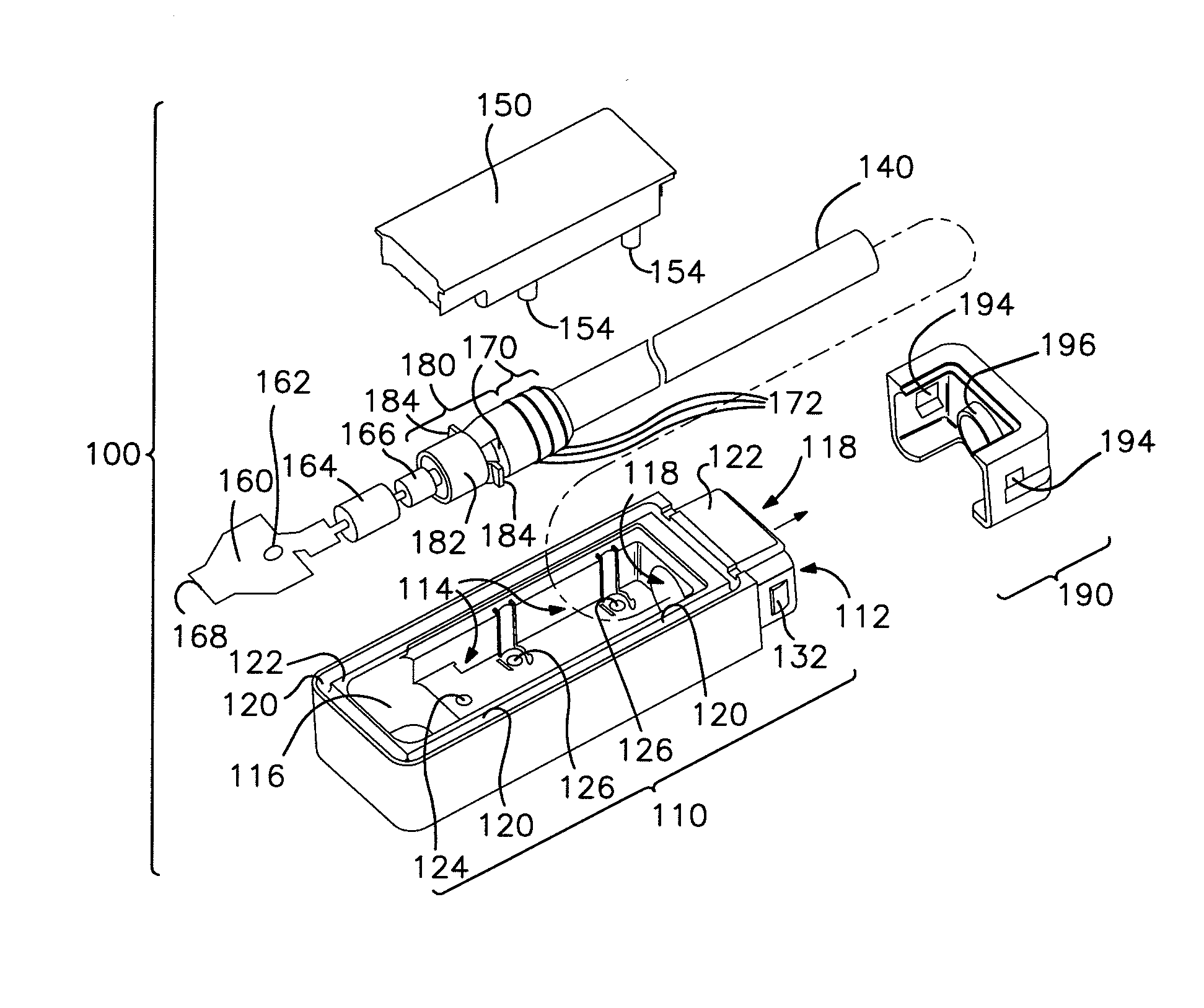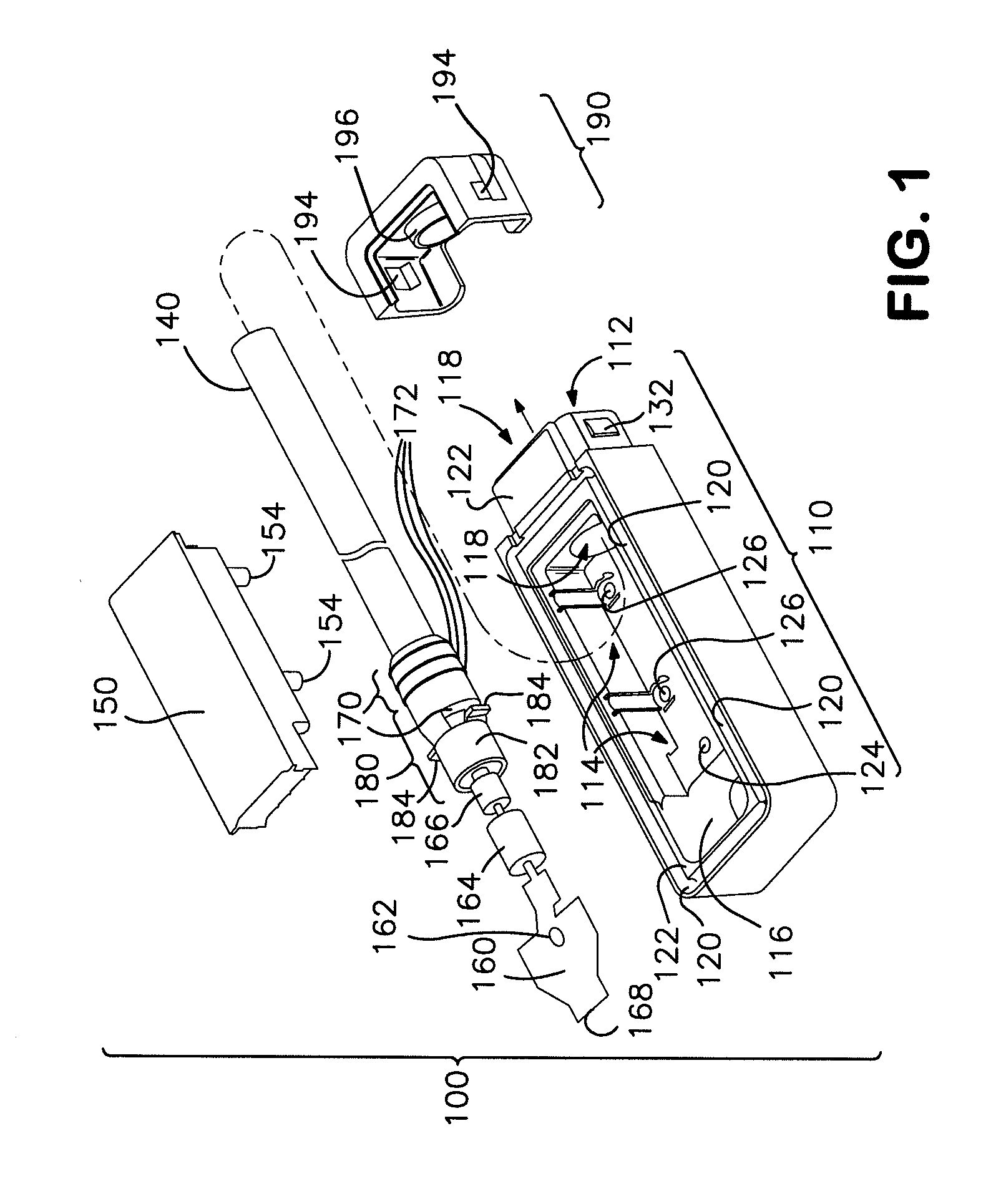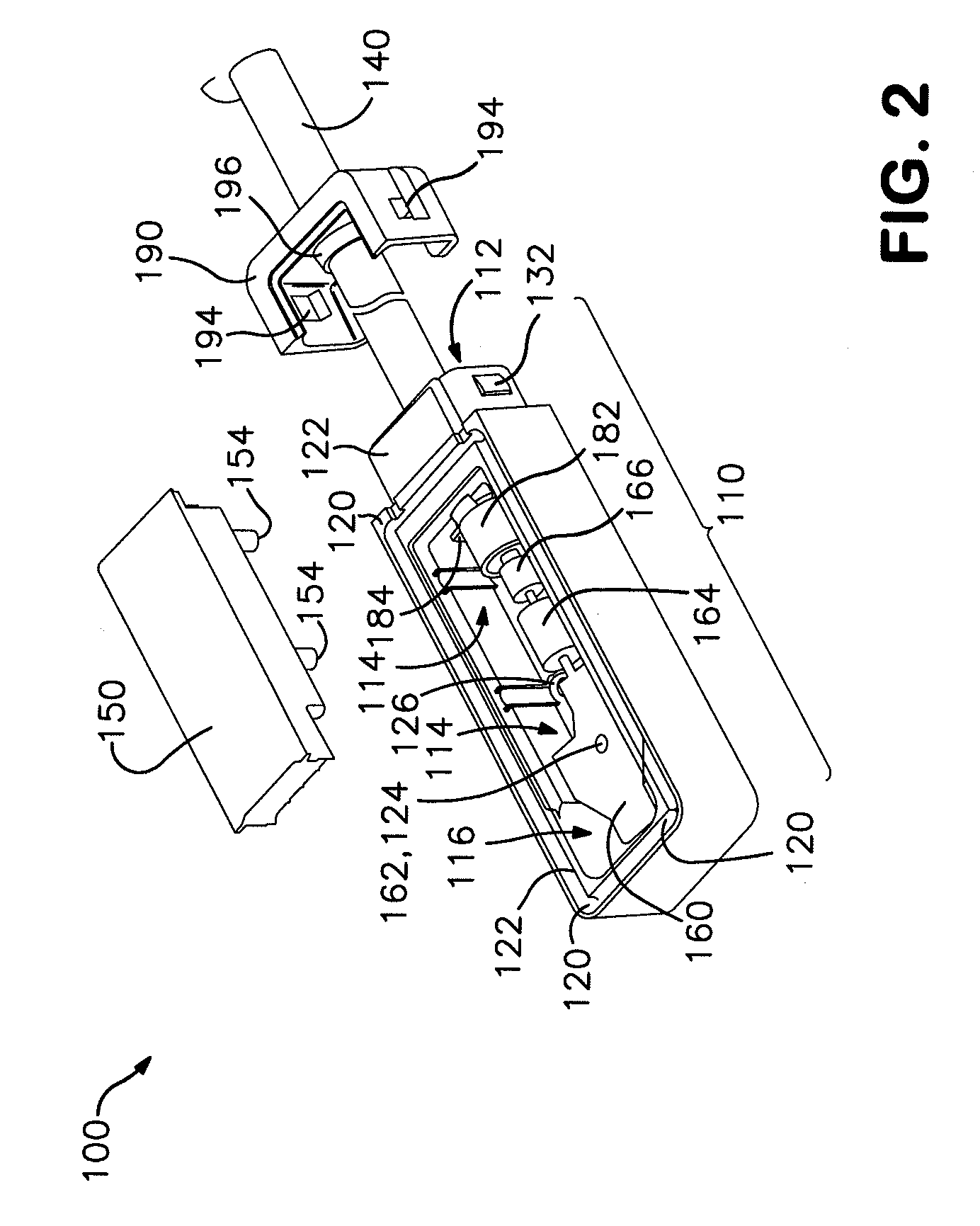Solar module connector and method of use
a technology for solar modules and solar panels, applied in the direction of electric connection bases, coupling contact members, coupling device connections, etc., can solve the problems of poor bond between the two components, existing connectors for connecting solar modules susceptible to water infiltration, etc., to improve the protection of the internal electrical components of the connector from the environment, easy-to-assemble, and easy-to-use effects
- Summary
- Abstract
- Description
- Claims
- Application Information
AI Technical Summary
Benefits of technology
Problems solved by technology
Method used
Image
Examples
Embodiment Construction
[0018]Referring to FIGS. 1-4, one embodiment of a solar module connector 100 of the present invention is shown. The solar module connector 100 includes a cable 140. The solar module connector 100 also includes a housing 110 having a mounting surface 122 at least a portion of which partially defines an opening 116 for facilitating contact with at least one buss lead 72 of a solar module 71 (see FIG. 7), a cavity 114, a cable end 112, and a passageway 118 between the cavity 114 and the cable end 112. In this embodiment, the solar module connector 100 also includes a cover 150 mounted to the housing 110 over at least a portion of the cavity 114. The housing 110 and the cover 150 together cooperate to define the opening 116 (see FIG. 3). A seal 170 is disposed around the cable 140 and is at least partially seated in the passageway 118. Additionally, a contact 160 is electrically connected to the cable 140 and disposed in the cavity 114 proximate the opening 116. In this embodiment, a ca...
PUM
| Property | Measurement | Unit |
|---|---|---|
| axial movement | aaaaa | aaaaa |
| length | aaaaa | aaaaa |
| semiconducting | aaaaa | aaaaa |
Abstract
Description
Claims
Application Information
 Login to View More
Login to View More - R&D
- Intellectual Property
- Life Sciences
- Materials
- Tech Scout
- Unparalleled Data Quality
- Higher Quality Content
- 60% Fewer Hallucinations
Browse by: Latest US Patents, China's latest patents, Technical Efficacy Thesaurus, Application Domain, Technology Topic, Popular Technical Reports.
© 2025 PatSnap. All rights reserved.Legal|Privacy policy|Modern Slavery Act Transparency Statement|Sitemap|About US| Contact US: help@patsnap.com



